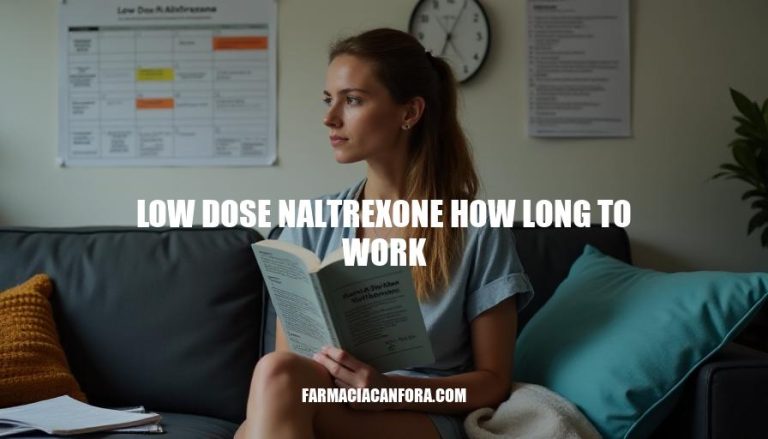


Low dose naltrexone is a medication that’s often used in small doses. It works by blocking opioid receptors, which can actually increase your body’s natural painkillers. This has helped people with conditions like multiple sclerosis, fibromyalgia, and Crohn’s disease.
The thing is, it doesn’t work the same for everyone. Some people might feel better within a few weeks, while others might take several months to notice the full effects.
The time it takes for low dose naltrexone (LDN) to work can vary significantly based on several factors. Individual variability plays a crucial role, as each person’s body chemistry and immune response can affect how quickly they experience benefits. The specific condition being treated also influences the timeline; for instance, patients with fibromyalgia or multiple sclerosis may notice improvements within a few weeks, while those with Crohn’s disease or chronic fatigue syndrome might require several months to see significant changes.
Dosage is another critical factor; LDN is typically prescribed in doses ranging from 0.5 mg to 4.5 mg, and finding the optimal dose for each individual can impact the speed of its effectiveness. Adherence to treatment is essential, as consistent use of LDN is necessary to achieve and maintain its therapeutic effects. Studies and patient experiences highlight that while some individuals report rapid improvements, others may need to adjust their dosage or combine LDN with other treatments to achieve the desired results.
Overall, the effectiveness of LDN is highly individualized, and ongoing research continues to explore its potential benefits across various conditions.
Low dose naltrexone (LDN) is a medication that can help alleviate symptoms in various conditions, including multiple sclerosis, fibromyalgia, and Crohn’s disease.
While its effectiveness timeline varies from person to person, most patients may start noticing benefits within a few weeks to several months.
Several factors influence the speed of LDN’s effects, including individual variability in body chemistry and immune response, the specific condition being treated, dosage, and adherence to treatment.
Some people may experience rapid improvements, while others may need to adjust their dosage or combine LDN with other treatments.
It’s essential to consult with a healthcare provider for personalized advice and monitoring, as they can help determine the optimal dose and treatment plan for each individual.
With ongoing research exploring its potential benefits across various conditions, LDN offers hope for those seeking alternative solutions to manage chronic symptoms.